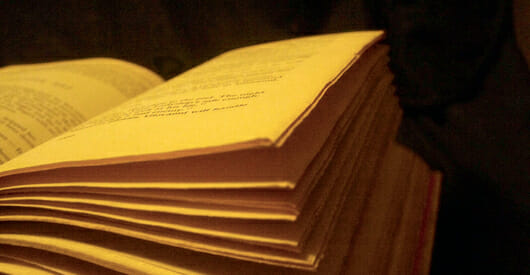
When you sit down to design a book, there are organizational tasks you have to address right at the beginning. Getting your raw materials organized and making sure your workflow will produce an efficient publishing process are important enough to spend some quality time on. Let’s take them one at a time.
The Raw Materials of Book Design
Over the course of the design of your book you’ll be making dozens of decisions, some large and some small. To make these informed decisions, you have to have a complete grasp of the materials you’re working with.
Books, and book design, start with a manuscript. However, every manuscript is unique. Over the years I’ve worked with hundreds of manuscripts supplied by authors, editors and publishers, and I can tell you there are very few similarities.
Luckily, since you’re a self-publisher, you only have to worry about your own manuscript. And considering the time it takes to write a book, I bet you’re very familiar with your manuscript by now, aren’t you?
However, you haven’t looked at it the way a book designer does. Here are some of the things you’re going to need to know once we get started on the book, and a series of questions that will draw out the information:
- How many words? If you have the whole book in one file, most word processors will tell you the number of words in the document. For instance, in Microsoft Word, use Menu / Tools / Word count to get a simple display. This is much more helpful than the number of pages. Although the number of individual characters would be even more accurate, for our purposes a word count will do just fine.
- How many formats? This is a key piece of information. If your book has been edited by a professional book editor, you may have a style sheet that indicates all the formats in the book. If you’re not so lucky, you’ll have to examine the manuscript yourself. What’s a format? Everything that isn’t a basic text paragraph, like quotations, subheads, captions and so on. Books vary widely in the number of formats they contain, and this is the biggest factor in determining how much time the book will take to lay out after the design is final.
- How many parts? Some books have sections, parts, chapters, or all of the above. Many nonfiction books use parts to separate main sections of the work, and chapters to subdivide those sections. Each of these elements requires its own design, and this organization is part of the infrastructure of the book.
- How many graphics? Many books contain no graphics, but did you count your publisher logo on the title page? Is there an author photo at the back of the book for the About the Author page? Or does the book use charts, graphs, photos, illustrations or line drawings? This is crucial information and affects the number of formats. For instance, you may need captions, labels, titles, or legends to properly present your graphics.
- How many non-text elements? It’s particularly popular in how-to and self-help books to include lots of non-text elements like pull quotes, sidebars, tips, hints, tricks and so on. These need to be organized and logical, and we need to know how many there are and how accurately they need to be positioned within the text.
- How many tables? There are quite a few nonfiction books that use tables or other typographic means to present data to readers. Since these elements will have to be typeset and positioned separately from the text, we need an inventory.
- What software? What software will you use for your book design? Some kinds of design simply can’t be done with word processing software. Understanding the demands of your book will help you decide what software you’ll need, and I’ll discuss this in detail later. You also need to know what fonts are available, because a major decision about your book will be the fonts you use. You’ll want to know what you have available and what’s appropriate for your book.
- How many comparable books? Whatever your subject matter, it’s important for you as the book designer to know what other books are being published in your field. What size are they? What kind of covers do they have? What price are they? Your book will be positioned in the same niche, and your answers to each of these questions will guide some of your design decisions.
- Who is the market? Who is your ideal reader? Many self-publishers are part of the market they are writing for, and if that’s you, you have a big head start. Readers of naval histories may have quite different expectations of book design than readers of investing books, or fans of cookbooks. As the book designer, you want to know what those expectations are so you can satisfy them.
Find a way to organize this information for yourself. I use Evernote quite a bit because it’s flexible, powerful, uses keywords and folders, syncs through the “cloud,” runs on the Mac, the iPhone and the iPad, and it’s free.
You might use a spreadsheet, or just a word processing file to keep track of your inventory. Make a note of the location of all your files and the contact info for anyone associated with the project. Take screen shots of comparable books you’ve researched on Amazon and concepts you like for cover ideas. All this information will be invaluable as you go forward, so it pays to start gathering it now.
Once you’ve gathered your raw materials, it’s time to take a look at our workflow, but I’ll save that for next time.
In the meantime think about the principle of book design:
The basic function of your book design is to present the manuscript in a typographic form that facilitates the satisfying, enjoyable and efficient transmission of your ideas to the reader. Anything that gets in the way of that transmission should have some justification or be eliminated.
If you understand this guiding principle, you’ll soon see that the aim of book design revolves around the content of the book, not the cleverness or ingenuity of the designer. At its best, book design melts away as the reader engages your words, your story, your characters or your ideas.
Image licensed under a Creative Commons Attribution 3.0 License, original work copyright by Jo Naylor, https://www.flickr.com/photos/pandora_6666/4927865092


